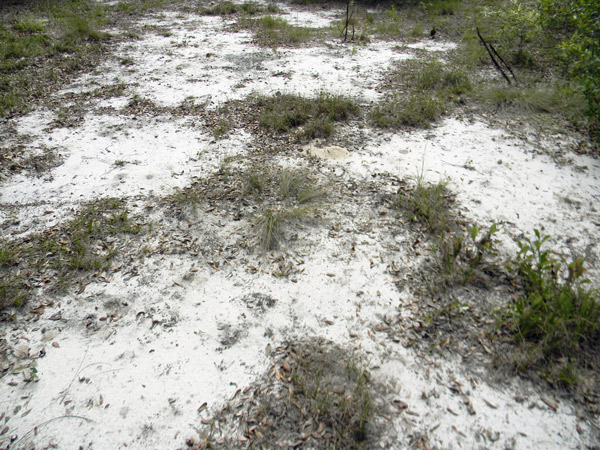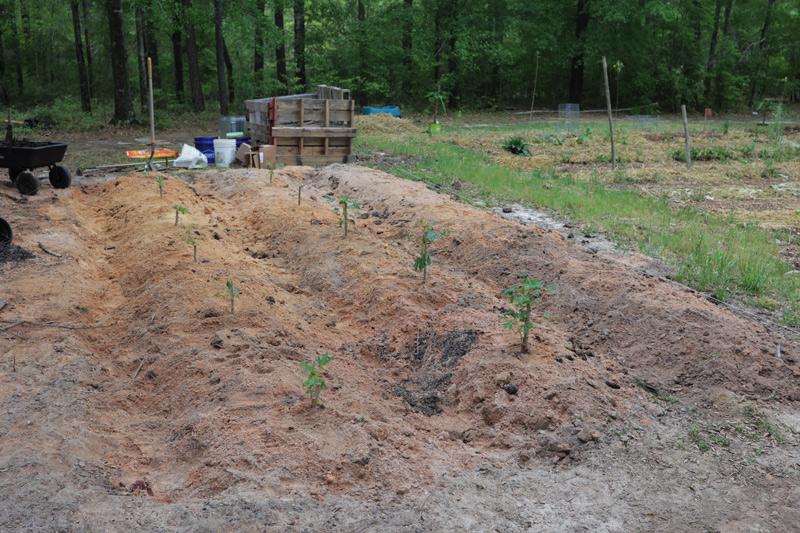Just because you have a sandy Florida yard, it doesn’t mean you can’t grow food.
Last week at the Palafox Market, a couple told me they were struggling to garden in their “terrible sand” near the ocean. It can be tough, for sure, as it eats compost and drains quickly, becoming hot, and dry, and Sahara-like just days after a rain.
Yet you can garden quite well in Florida sand. Jim Hawkins writes:
When I lived in Niceville FL, mid 1980s. I went to the local fisherman’s Co-Op and sometimes to Destin harbor to meet the returning boats, got plenty of fish bones and guts for my garden. I took all my neighbors live oak leaves I could find (at least 100 bags each year) and put them into foot deep trenches mixed with the fish residues. Covered with about 6 inches of the 99% pure sand and planted my garden. No rotten fish smell!! The first year was so-so as far as crops, but next three years, I was the talk of the town. The city Administrator even came to see my garden. Based on my results, the Twin Cities, of Niceville and Valparaiso, launched a compositing center and offered back free composted mulch to residents at no charge, saving the towns tens of thousands of dollars each year in landfill fees.
Oak leaves = carbon; fish guts = nitrogen, plus all the great nutrients from the ocean.
This reminds me of an experiment we did a couple of years ago when we were renting our previous house.
There we found a pile of construction sand that had been dumped some years previously at the leading edge of the backyard. It was almost pure masonry sand, with a bit of red sub-soil sand mixed in, spread across the ground near an oak.
I borrowed a tractor and spread it out, then dug a few trenches in it and laid down rows of cow pies, which I then buried under mounded beds.
On top of these mounds, I planted cassava cuttings.
Much to my delight, we grew some of the best-looking cassava in that terrible sand.
Don’t underestimate the power of organic matter to improve sand! It’s also very easy to dig root vegetables from Florida sand, which is an added benefit.
We’ve also planted lasagna gardens on top of sand, and made melon pits, and watered the sand with Dave’s Fetid Swamp Water. All of these practices we tried and tested across multiple homesteads, and our results culminated in my book Compost Everything: The Good Guide to Extreme Composting.
Jim figured it out even before we did. And so have many others. Don’t let the sand defeat you.
It can be as simple as digging a hole or a trench, burying some various organic materials, then planting on top.
You can grow plenty more than you think, even if you have nothing but construction sand.



4 comments
Here in the sandy hills of middle Georgia we have a similar problem. However, for the last few years we have worked hard to improve the soil by adding lots of organic matter. Composting everything, including our enemies! Yes, all of those wild hogs that destroy everything. We shoot them and those that we don’t eat (big boars that are too stinky!) we burry them in our garden. We do the same we whitetail deer guts and skins after we process them during hunting season. The soils are becoming extremely fertile and full of life. Keep it simple and compost everything!
Thank You, David! When yesterday emailed You about the dried out cassava cuttings . I watched a video about Mexican spinach tree. And somehow got confused. So the dead cuttings are cassava,obviously Didn’t want to bother to straight this out with another email. God Bless Y’all
David, my family has been gardening in Fl sand for seven generations “eight if I include my 3 year old daughter”. Everything you said is spot on! I love watching your videos because it’s like watching a thinner and better spoken version of myself lol! I’ll be planting some tilapia and dairy manure in our Florida sand hill sand next week and will be planting 3 varieties of water melons, 6 varieties of pumpkin, spaghetti squash, butternut squash, and acorn squash. I’ve dedicated about a half acre for this and plan to space at 3’ in row with rows 10’ apart. The melons will be part of my “grocery row” going between the young fruit trees. Wish me luck and thanks for all the information you share!
Thank you. Good luck, James.
Comments are closed.